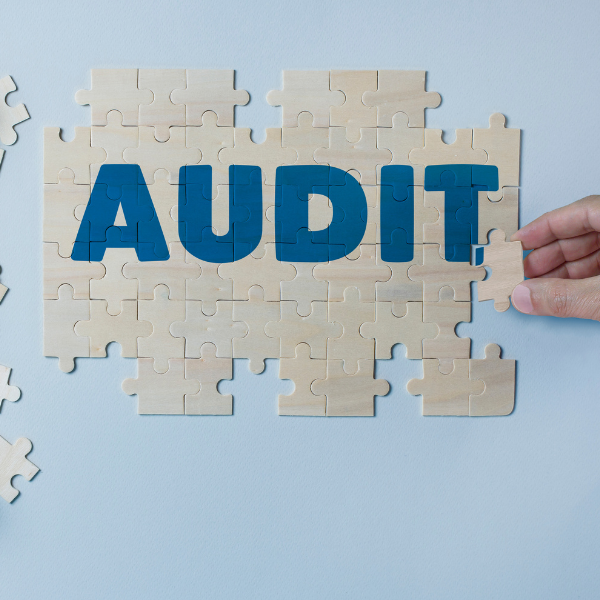In the ever-evolving world of SEO, technical optimization remains the backbone of a high-performing website. Without a solid technical foundation, even the best content and backlinks won’t help your site rank effectively. A technical SEO Audit helps identify and fix issues that may be hindering your site’s visibility, crawlability, and overall performance. Whether you’re an SEO professional, a website owner, or a developer, this 12-step guide will walk you through a comprehensive technical SEO audit to ensure your site is optimized for search engines.
Why is a Technical SEO Audit Important?
Before diving into the steps, let’s understand why a technical SEO audit is crucial:
- Improves Crawlability: This helps search engines index your pages efficiently.
- Enhances Site Speed: Faster websites rank better and improve user experience.
- Fixes Indexing Issues: Ensures important pages are indexed, and unwanted pages are excluded.
- Boosts Mobile Performance: A mobile-friendly site with mobile-first indexing is a must.
- Identifies Security Risks: HTTPS and other security measures impact rankings.
- Optimizes Site Structure: A well-structured site improves user navigation and SEO.
Now, let’s break down the 12 essential steps for a successful technical SEO audit.
Step 1: Crawlability & Indexability Check
Search engines need to crawl and index your site to rank it. Use tools like Google Search Console (GSC), Screaming Frog, or Sitebulb to analyze:
- Robots.txt: Ensure it’s not blocking critical pages.
- Noindex Tags: Check if important pages are accidentally set to no index.
- Canonical Tags: Verify correct implementation to avoid duplicate content issues.
- XML Sitemap: Ensure it’s updated and submitted to Google.
Action Items:
- Fix any disallowed URLs in robots.txt.
- Remove noindex from important pages.
- Submit an updated XML sitemap to GSC.
Step 2: Site Structure & Internal Linking
A well-organized site structure helps search engines and users navigate easily.
- URL Structure: Keep URLs short, descriptive, and keyword-rich.
- Internal Links: Ensure key pages have sufficient internal links.
- Orphan Pages: Identify pages with no internal links (use Screaming Frog).
Action Items:
- Fix broken internal links.
- Add internal links to important but underlinked pages.
- Optimize URL structure for clarity.
Step 3: Mobile-Friendliness & Core Web Vitals
Google uses mobile-first indexing, so your site must be mobile-friendly.
- Mobile Usability Test: Use Google’s Mobile-Friendly Test.
- Core Web Vitals (LCP, FID, CLS): Check-in Google Search Console.
- Responsive Design: Ensure the site adapts to all screen sizes.
Action Items:
- Optimize images and reduce JavaScript for faster loading.
- Fix layout shifts (CLS issues).
- Test on multiple devices.
Step 4: Page Speed Optimization
Slow sites lead to higher bounce rates and lower rankings.
- GTmetrix / PageSpeed Insights: Analyze loading times.
- Optimize Images: Compress and use modern formats (WebP).
- Lazy Loading: Implement for images and videos.
- Minify CSS/JS: Reduce render-blocking resources.
Action Items:
- Enable caching and use a CDN.
- Optimize server response time.
Step 5: HTTPS & Security
A secure site is a ranking factor.
- SSL Certificate: Ensure HTTPS is implemented.
- Mixed Content Issues: Fix insecure resources on HTTPS pages.
- HSTS: Enable for added security.
Action Items:
- Migrate from HTTP to HTTPS if not done.
- Use security headers (CSP, X-Frame-Options).
Step 6: Structured Data & Schema Markup
Schema markup helps search engines understand your content better.
- Rich Snippets Test: Use Google’s Rich Results Test.
- Implement Schema: For products, FAQs, breadcrumbs, etc.
Action Items:
- Add JSON-LD markup for key pages.
- Fix errors in structured data.
Step 7: Fix Broken Links & Redirects
Broken links hurt UX and SEO.
- 404 Errors: Identify in GSC or Screaming Frog.
- Redirect Chains: Shorten them (301 > 302).
- Canonicalization: Avoid duplicate content via proper redirects.
Action Items:
- Fix or redirect broken links.
- Replace temporary (302) redirects with permanent (301) ones.
Step 8: Duplicate Content Issues
Duplicate content dilutes SEO value.
- Check for:
- URL parameters creating duplicates.
- Similar meta titles/descriptions.
- Scraped or copied content.
Action Items:
- Use canonical tags.
- Merge or rewrite duplicate content.
Step 9: Optimize Robots.txt & Meta Tags
Ensure search engines crawl the right pages.
- Meta Robots Tags: Verify correct usage.
- Title & Descriptions: Unique and optimized (under 60/160 chars).
Action Items:
- Optimize meta tags for key pages.
- Avoid noindex, nofollow unless necessary.
Step 10: International SEO (If Applicable)
For multilingual/multi-regional sites:
- hreflang Tags: Correct implementation.
- Geotargeting: Set in GSC.
Action Items:
- Fix hreflang errors.
- Use proper ccTLDs or subdirectories.
Step 11: JavaScript & SEO
Google crawls JavaScript, but issues may arise.
- Test Rendering: Use Google’s URL Inspection Tool.
- Lazy-Loaded Content: Ensure it’s crawlable.
Action Items:
- Pre-render critical content.
- Avoid heavy JS frameworks if they harm SEO.
Step 12: Log File Analysis
Server logs show how bots interact with your site.
- Crawl Budget: Ensure bots aren’t wasting time on low-value pages.
- Blocked Resources: Check if CSS/JS is blocked.
Action Items:
- Optimize the crawl budget by fixing inefficiencies.
Conclusion
Performing a technical SEO audit might seem like a lot of work, but it’s necessary to ensure your website is optimized for both users and search engines. Following these 12 steps, you can identify and fix any technical issues affecting your rankings. Regular audits are key to staying competitive in search results, so conduct them at least once every 6 months or whenever significant changes are made to your website.
At Radial Impact Marketing, we specialize in comprehensive SEO audits and optimization services to help your website reach its full potential. Whether you need a one-time technical

